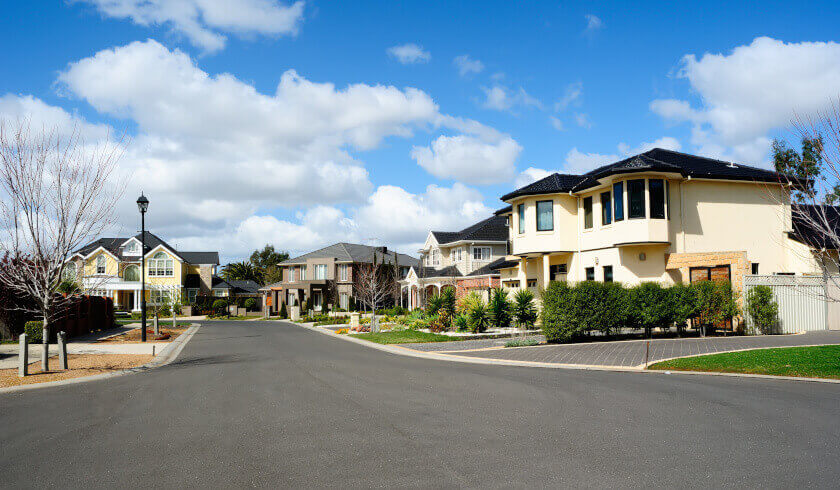How will the new subdivision legislation affect the Victoria property market?
The Victoria state government recently introduced a new minimum garden area requirement into the Neighbourhood Residential Zone and the General Residential Zone planning schemes as they aim to “protect the open garden character of our suburbs, towns, and cities”. What do investors need to know about this requirement?

According to Pure Property Investment’s Paul Glossop, the local government wanted to change the restrictions on lands to realise their vision for Victoria in light of the continuous population growth.
To continue reading the rest of this article, please log in.
Create free account to get unlimited news articles and more!
While the government wants to maintain the influx of people in the state, they are trying to avoid the rise of units in every single street corner within 500 metres of a train station, the buyer’s agent said.
He highlights: “They had a very good vision for Victoria in general … [and], more specifically, [for] the more densely populated areas of Melbourne. [They] want to see, probably, something that's going to … outline a landscape … [without] necessarily losing the classic backyard.”
The Reformed Residential Zones planning scheme states the corresponding allowable size of the garden area for specific lot sizes:
- 25 per cent of 400-500 square metre lots
- 30 per cent of 501-650 square metre lots, and;
- 35 per cent of lots above 650 square metres
This mandatory requirement applies to all land in the Neighbourhood Residential Zone and General Residential Zone measuring 400 square metres or more, according to Victoria State Government. Garden areas do not include driveways, car parking, buildings, or roofed areas.
Mr Glossop believes that this legislation will not hinder the growth of property in the state since it specifically pertains to garden areas. The local government has not put additional requirements on land sizes for dwellings.
“Ultimately, as long as you can fit to the height as well as the minimum garden space requirements, you're going to see more property go in … [They are just] intentionally making sure they've got some green space, they've got some usable outdoor areas—I think the vision is right,” he said.
Population growth and supply
Victoria’s population is expected to rise to over 8 million by 2050—that is 90,000 more people every year—according to Mr Glossop.
Naturally, the state will have to meet the growing demand for dwellings, but not at the expense of valuable neighbourhood characteristics such as heritage and streetscapes. The new garden area requirement aims to protect the “green open character” of the state’s neighbourhoods while satisfying the current and future needs of the community based on changing lifestyle and housing preferences.
Mr Glossop said: “We've got to say … ‘Let's do this in a way that people are going to get really nice and really well-accommodating, well-amenity houses … and we're incentivizing people to want to build that … We don't want to stop them.’ ”
While new legislation might affect supply in Victoria’s suburbs, according to him it ensures that the right types of property are built across the market.
Developers will continue to have opportunities to build, but they will also have to abide by these new regulations so that Victoria continues to keep up with the increasing demand for dwelling without turning into a dull concrete jungle.
Mr Glossop highlights: “[It’s] going to mean that [developers] … [are] not just going to create a huge amount of rubbish … very quickly … as opposed to [building] well-thought through [and] well-landscaped [accommodations with good amenities].”
“Local governments don't want to create ghettos. They want to create suburbs … [with] liveable spaces [for] people to live, work, and prosper,” Mr Tarrant added.
The importance of research
Despite the perceived benefits and disadvantages of the new legislation, Mr Tarrant reminds investors that nothing is set in stone, especially in the investment landscape.
As an avid investor who has successfully built a multi-property portfolio through the years, he strongly recommends doing due diligence before securing a property or undertaking a subdivision project, whether in Victoria or in any other state.
“Stuff changes all the time. It can change on a weekly, a monthly, or a yearly basis … If you do some research six months ago, it might be very different than what it is today,” he said.
In the same way that you conduct your own thorough research by crunching the numbers, visiting the site, and partnering with property professionals, Mr Glossop also encourages being in tune with the most current events in the local state and federal market. Being aware of their plans can help you avoid unnecessary financial losses and wasted time.
Mr Glossop said: “Development looks very glamorous but there are a lot of people who lose money mainly [because of] these things. There is a lot that's out of your control, whether it be local government… state government, federal government, and also builders and all the [other] variables.”
“[There are] a lot of rules and regulations and legislation around [subdivision] and it changes depending on where you're doing it … Every local council has got its own requirements … Speak to your local council to actually understand [what you can and can’t do],” Mr Tarrant concluded.
Tune in to Paul Glossop’s Q&A episode on The Smart Property Investment Show to know more about the Victorian State Government changes to subdivisions, as well as the answers to some of the most frequently asked investment questions.

